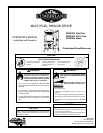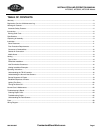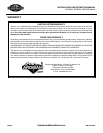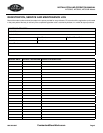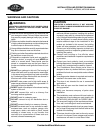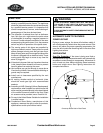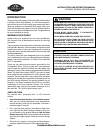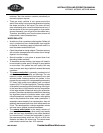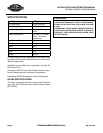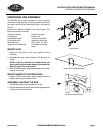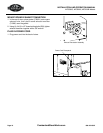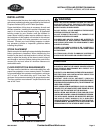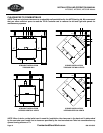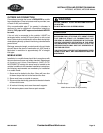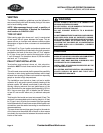
INSTALLATION AND OPERATION MANUAL
MF3500G, MF3500S, MF3500B Models
Page 7800-345-6007
CumberlandStoveWorks.com
moisture. Test the moisture content periodically to
ensure the proper dryness.
• There are many varieties of corn grown around the
world. Each variety has unique characteristics including
the shape and size of the kernel. The stove will burn
more consistently with a small to midsize kernel corn. If
the kernel size of the corn varies greatly or if you switch
sources frequently, you will get a less consistent burn.
Therefore, purchasing corn from the same source will
help achieve a more consistent burn.
WOOD PELLETS
• As with corn, find a consistent pellet supplier. Pellets will
vary in content and burn characteristics from supplier
to supplier. A consistent supply of pellets will result in a
more consistent and efficient burn.
• Check the pellets for foreign objects. The stove warranty
will not cover damage done to the stove due to foreign
objects in the fuel supply.
• Store the pellets in a dry place to prevent them from
absorbing added moisture.
• To decrease sawdust buildup, the hopper will need to
be vacuumed out after every 6-8 bags of wood pellets
or more often if the pellets are poor quality. You may
have to screen each bag of pellets if sawdust becomes
a problem.
• The press wood pellet is generally produced out of
wood waste such as sawdust and shavings. The raw
material is dried, mechanically fractioned to size and
extruded under intense pressure into pellets. In the
process the raw material is compressed approximately
3.7 times. High quality wood pellets have a moisture
content of 3 to 7% and are hydrophilic. The shiny surface
of the pellet is caused by partial plasticizing of the lignin
in the wood due to high pressure and the evaporation
of the water soluble compounds during the production
process. The surface protects the pellets from absorbing
any significant amount of airborne water vapor under
normal atmospheric conditions. However, wood pellets
need to be protected from direct water penetration. If
exposed to water droplets, from condensation, they will
gradually decompose and loose their effectiveness as
a fuel. The decomposition involves expanded volume
and over time a gradual chemical breakdown.
• The natural wood pellet is the woody remains of
cherries, edible nuts and any other locally used woody
plant that has been classified by the pellet distributor
as “natural wood.” It should be comparable in size to
the press wood pellets which are 1/4 inch to 5/16 inch
diameter and about 3/4 inches long. The natural wood
pellet should contain less than 10% moisture.



